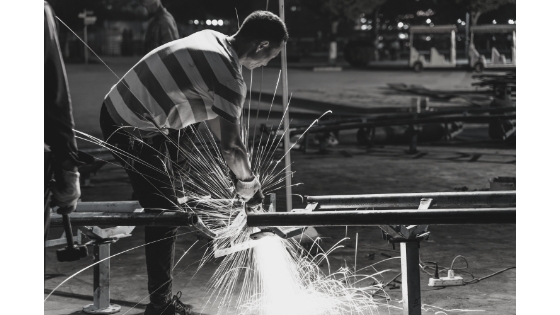Delivery of COSHH Information and Training
The HSE’s seventh principle refers to the need for the delivery of effective COSHH information and training throughout a place of work.
Assessment of Risk
In order to deliver effective training, there first needs to be a full appreciation of the risks associated with the processes involved. Once an exhaustive review has been concluded, you are then in a position to implement an effective and safe process. Our blog How to Carry Out a COSHH Risk Assessment should help you.
Motivation
In order for there to be full ‘buy-in’ from employees, there needs to be an appeal to their own motivation. Effective motivation comes from a full appreciation of the reasoning behind the control measures being put in place; a full understanding of exposure to the risks involved will support the use of safety equipment and safe working practices.
Understanding the Risks
Risks such as a spinning blade or working at a dangerous height are visible risks that will motivate a worker to ‘work safely’. However, when the risks are less evident and tangible, there is less implicit motivation.
Many processes have more subtle or invisible risks that are not immediately apparent. Airborne particles that do not smell or cause direct irritation could be seen as innocuous and therefore carry less perceived urgency to work safely. Latent or delayed dangers, such as the grinding of sandstone may seem harmless until the risks of exposure to respirable crystalline silica (RCS) are explained.
Being made aware of the consequences of long-term ill health in the form of silicosis will mean that control measures will carry much more relevance. Clarification of the risks in a forthright and honest manner will always lead to better levels of engagement.
Involvement in Procedure Design
When considering a new process it is important to walk through the stages of the job with the colleagues who will be using them. Discussing the process steps involved with operators and the attendant risks will highlight the need for all parties to engage fully when adopting the control measures decided upon. Ill thought through or impractical processes are less likely to be fully adopted.
Review and Redesign
When colleagues are involved in the design stages of a process they are much more likely to take part in its ongoing development. It is imperative that processes identified to be partially or wholly ineffective are promptly reviewed. When colleagues are fully engaged and invested in the safety ethos of your business they will be inclined to speak up and play a part in the further development or refinement of the procedures when needed.
Conclusion
Control measures only work when they are used properly. Honest discussions about the rationale behind and implementation of control measures will serve to promote a safe and happy working environment.
We’re here to help
At Workplace Exposure, our expert team have experience working with a variety of different businesses to ensure they offer a safe, compliant working environment. Our professional solutions and advice help to ensure your business meets compliance standards and is operating to best practice. If you need help in carrying out a COSHH air monitoring survey to help select the correct PPE, or your workplace noise assessment, we’re here to help.
Our approach
Get in touch with Workplace Exposure. Either give us a call on 0800 689 4386, or fill in our enquiry form to discuss your monitoring or consultancy requirements.
We’ll then provide you with a no obligation proposal, we can often give an initial idea of fees whilst we discuss your needs.
Once you’ve accepted our proposal we can then schedule the work.
Following our site visit we’ll provide you with a comprehensive report giving you advice, recommendations and control measures where appropriate. Implement the outcomes for compliance and a happier healthier workplace.
